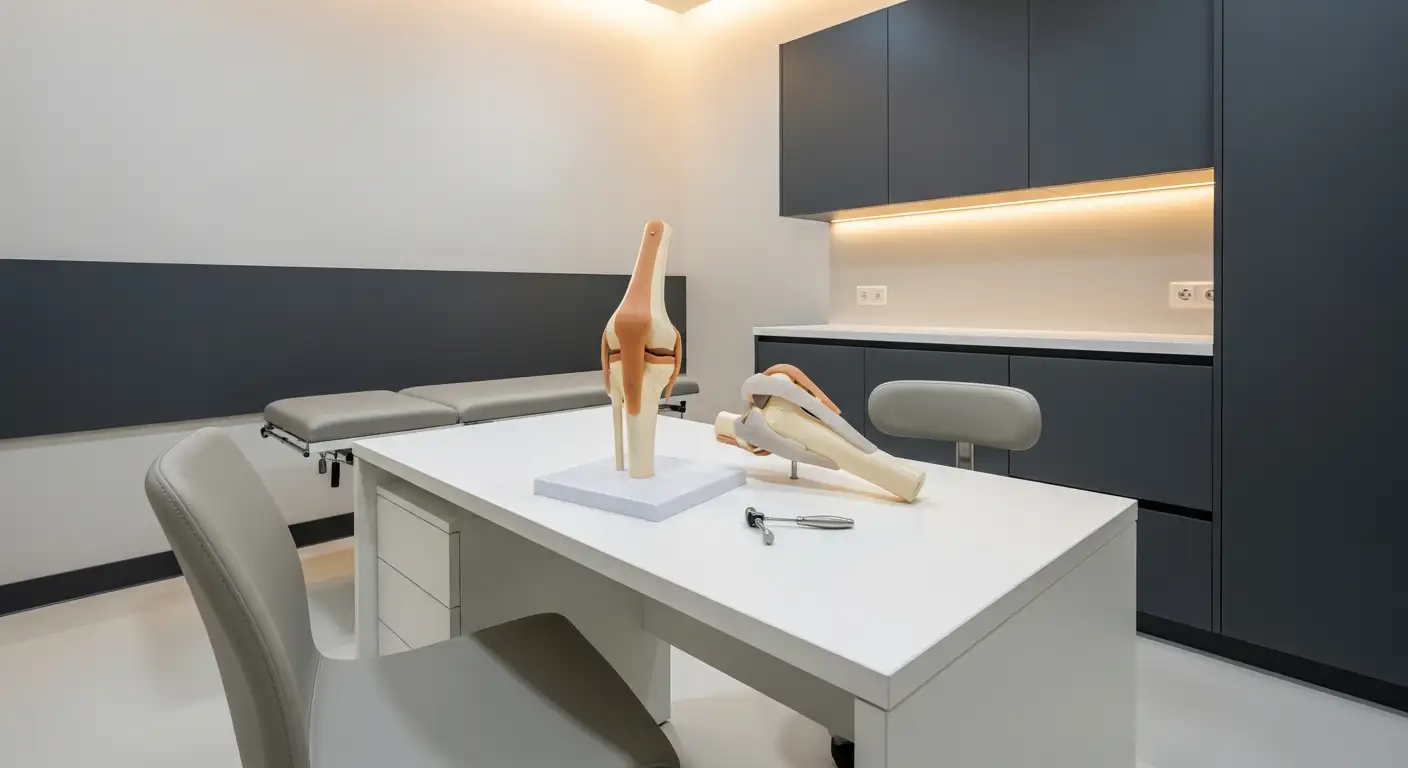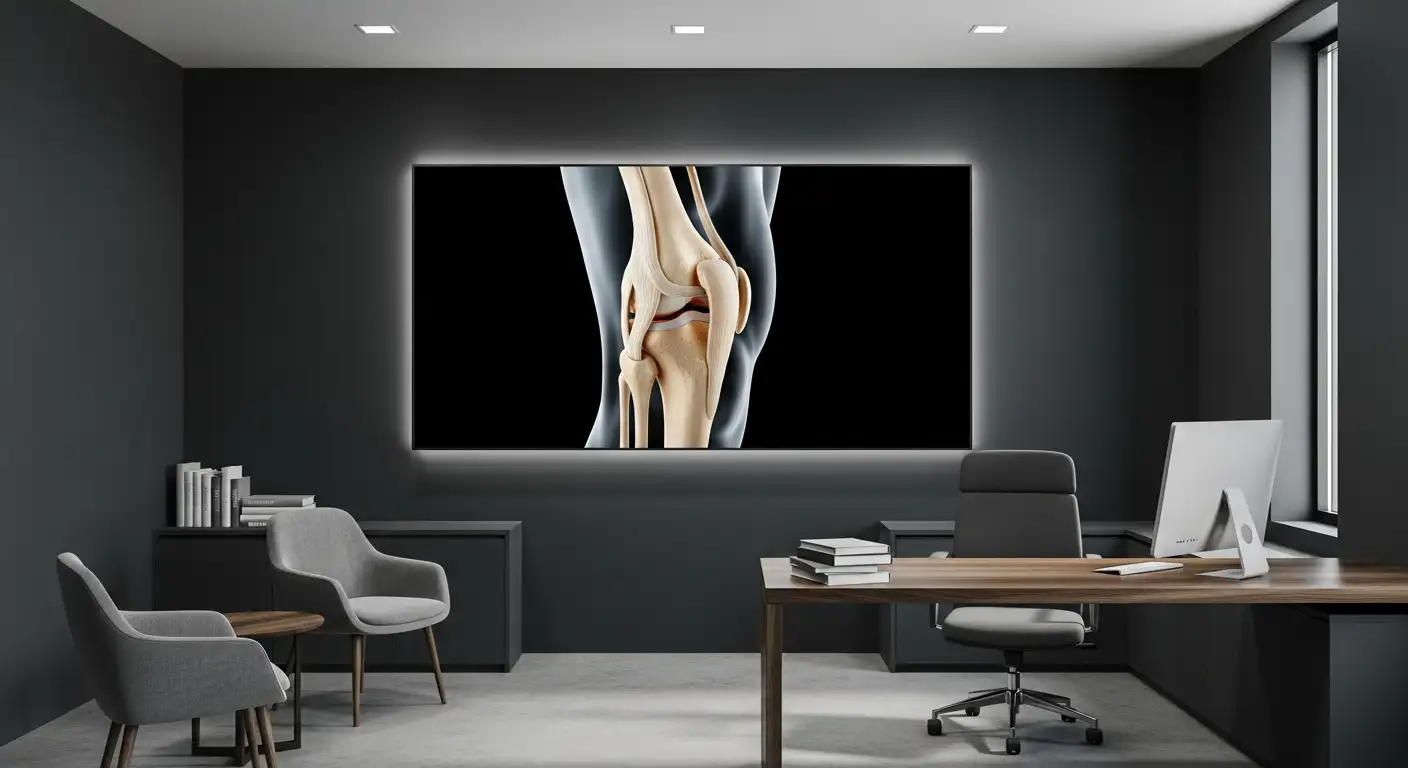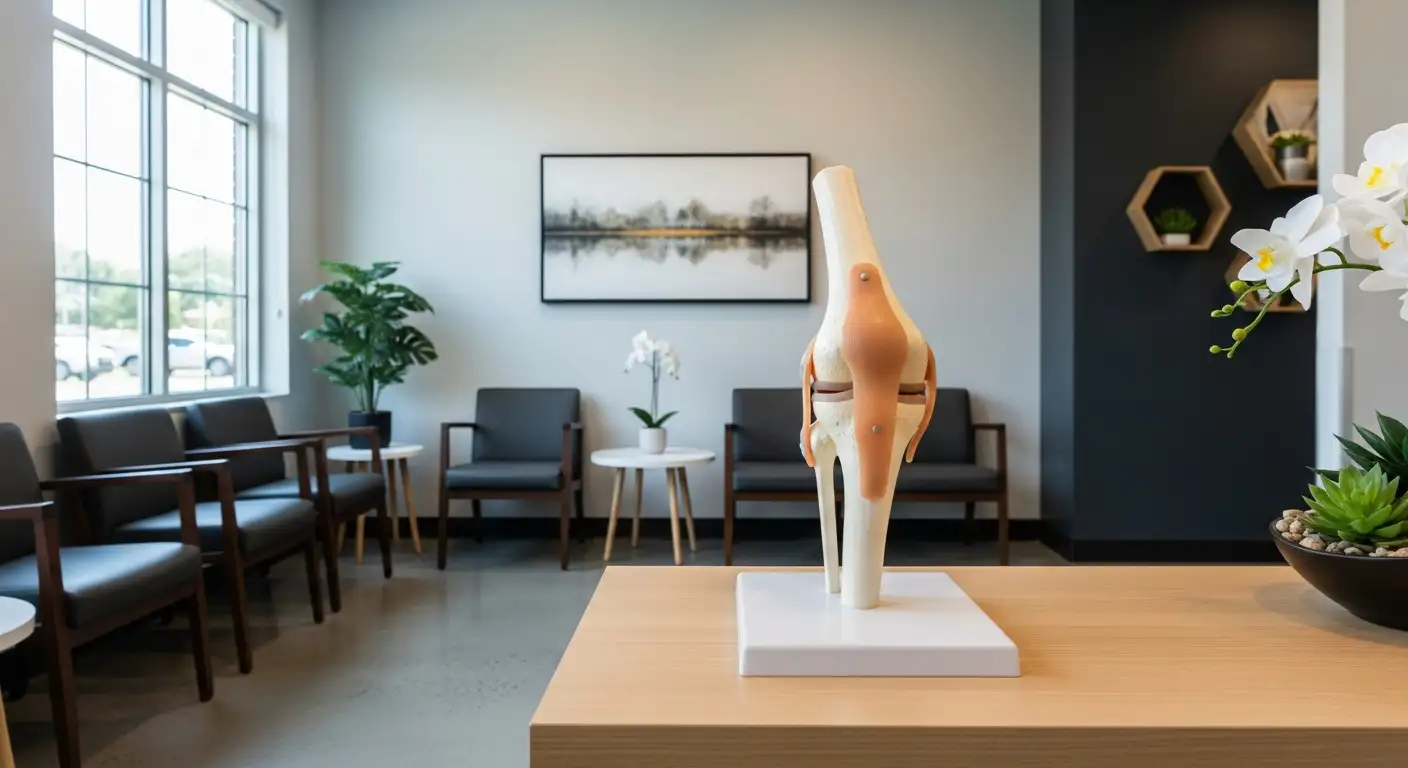Types of Knee Pain
When it comes to knee pain, understanding its root cause is crucial. Different conditions and syndromes cause varying types of knee pain. This section will delve into three common causes of knee pain: Bursitis and Front Knee Pain, IT Band Friction Syndrome, and Jumper's Knee and Patellar Tendinitis.
Bursitis and Front Knee Pain
Bursitis is a condition that can cause pain in the front of the knee. This condition occurs when a bursa, a small fluid-filled sac that cushions the knee joint, becomes irritated and swollen. Bursitis often results in a sharp, stabbing pain that is most noticeable when you move your knee or apply pressure to it. The pain may become more severe during physical activities, such as walking or running, but can also be felt when you're at rest.

IT Band Friction Syndrome
IT Band Friction Syndrome (ITBFS) is another common cause of knee pain. This condition involves the iliotibial band, a thick band of tissue that runs from your hip to the outer part of your knee. In ITBFS, this band rubs against the bone, creating friction that can lead to pain and inflammation. The pain caused by ITBFS is typically felt on the outer part of the knee and is often most noticeable when bending the knee.
Jumper's Knee and Patellar Tendinitis
Patellar tendinitis, also known as "jumper's knee," is a condition that occurs when the tendon connecting your kneecap to your shinbone becomes inflamed. This inflammation can cause pain below the kneecap, as well as stiffness in the knee. These symptoms are often most noticeable when climbing stairs, jumping, or kneeling. Overdoing exercise is a common cause of patellar tendinitis, but it can also occur as a result of aging or injury.
Understanding these different types of knee pain can help you identify potential causes of your discomfort and guide you in seeking appropriate treatment. It's important to consult with a healthcare professional if you're experiencing persistent knee pain, as they can provide a proper diagnosis and treatment plan.
Common Causes of Knee Pain
When discussing pain when lifting the knee, it's essential to understand the common causes that could contribute to this discomfort. From strains and sprains to overuse injuries and specific conditions, multiple factors can lead to such knee issues.

Strains and Sprains
Injuries such as strains, sprains, ligament tears, cartilage tears, or broken bones are common culprits behind knee pain. These injuries can occur due to various incidents like landing incorrectly, falling, twisting the knee, or experiencing impact injuries. The swelling around the injury is often the main cause of pain. Athletes, in particular, can be more susceptible to these injuries due to sudden movements that strain the knee during activities like running, jumping, or sports.
Overuse Injuries and Aging
Overuse injuries can result from intense repetitive exercise, which puts repeated pressure on the knee. Activities such as running, jumping, or other exercises that stress the knee joint significantly can lead to overuse injuries. The knee joint, being vulnerable to stress from activities like lifting, kneeling, jogging, and aerobics, is structured with shock-absorbing cartilage and held together by muscles, ligaments, and tendons. Over time, continual wear and stress on the joint can lead to problems, especially as one ages. Being overweight can also exacerbate these issues.
Specific Conditions and Injuries
Certain conditions and injuries can specifically cause knee pain. These include conditions like Patellar tendinitis (also known as "jumper's knee"), which involves inflammation in the tendon connecting the kneecap to the shinbone, leading to soreness when overdoing exercise. The iliotibial (IT) band syndrome is another condition that can cause pain, particularly on the outer side of the knee, especially common among runners.
Other conditions that can cause knee pain include bursitis, a dislocated kneecap, meniscal tear, Osgood-Schlatter disease, and patellofemoral pain syndrome. Mechanical problems, like improper kneecap tracking (patellofemoral pain syndrome), can also contribute to knee pain. Each of these conditions has specific symptoms and underlying causes, and treatment may involve wearing a brace to protect the knee during activity, with surgery sometimes necessary for repair [3].
Understanding these causes can help individuals take preventative measures and seek appropriate treatment for knee pain. It's important to consult with a healthcare professional for proper diagnosis and management of any knee pain.
Chronic Knee Pain
Chronic pain, including chronic knee pain, significantly impacts the lives of many individuals. It's a persistent condition that can affect any part of the body, including the knee, and can persist for months or even years. Here, we delve into the prevalence of chronic pain in the United States, neuropathic pain and functional syndromes, as well as its impact and treatment approaches.
Prevalence in the US
Chronic pain is a prevalent condition in the United States, affecting approximately 25% of adults and is a common reason for seeking medical care. The National Health Interview Survey found that in 2019, roughly 1 in 5 adults in the United States had chronic pain. More than 7 percent had chronic pain that frequently limited their activities at work or in wider life.
Neuropathic Pain and Functional Syndromes
Knee pain can often be neuropathic, a type of pain that occurs when nerves in the central nervous system become injured or damaged. One study in the United States found that 10 percent of adults experience pain that’s likely neuropathic. It tends to be chronic, but acute neuropathic pain may also occur.
Functional pain syndromes are another common cause of chronic knee pain. These syndromes often have no identifiable cause, making them particularly challenging to treat. More than 15 percent of the world’s population has a functional pain syndrome [5].
Impact and Treatment Approaches
Chronic knee pain can have a significant impact on an individual's life. It can limit their ability to perform daily tasks, engage in physical activities, and can even lead to mental health issues like depression and anxiety.
Treatment for chronic knee pain aims to identify and address the underlying cause. In cases where a clear cause is not found, a combination of medications, therapies, and lifestyle modifications is often recommended.
Addressing chronic knee pain in a comprehensive and timely manner is critical. It not only alleviates the physical discomfort associated with the condition but can also significantly improve an individual's quality of life. As we continue to understand chronic pain better, more effective treatment strategies can be developed to manage this common and impactful condition.
Knee Instability
Knee instability, often characterized by the feeling of the knee giving way, can be a concerning issue for many individuals, particularly those who lead active lifestyles. It can arise as a result of various factors and potentially lead to pain when lifting the knee. This section will explore causes, symptoms, treatment options, and the process of recovery and rehabilitation.
Causes and Symptoms
Knee instability can develop due to a range of causes, most commonly ligament injury, leading to the sensation of the knee twisting or moving side to side during basic activities [6]. Additionally, knee osteoarthrosis, characterized by the gradual wear down of knee cartilage, is more common in older individuals and can cause pain, swelling, and reduced mobility, contributing to knee instability.
This condition can manifest in individuals in their teens and 20s, with women being more likely to experience knee instability due to misalignment because of their wider hips. Furthermore, patients with a predisposition toward misalignment can develop knee problems due to overuse, stress from being overweight, or an abnormal knee cap groove (trochlea) [7].
Symptoms of knee instability can vary. People with chronic kneecap instability may or may not experience soreness or pain when climbing up or down stairs. Sometimes, there is no real discomfort, other than the unease and anxiety related to a knee that may give out at any time. However, traumatic injuries leading to dislocation are typically painful and accompanied by swelling.
Treatment Options
The treatment for knee instability primarily hinges on the underlying cause and severity of the condition. Rest and nonsteroidal anti-inflammatories are usually recommended as the first line of treatment for kneecap instability, serving to reduce swelling and allow natural healing. Physical therapy is also pivotal, restoring range of motion and strength, and assisting most patients to return to their previous activity levels.
Partial ligament tears causing knee instability can often be treated without surgery through nonsurgical solutions like physical therapy and medication. More severe ligament injuries, on the other hand, may require knee surgery.
Recovery and Rehabilitation
Rehabilitation plays a crucial role in the journey to recovery from knee instability. Following surgery for kneecap instability, patients may need to use crutches for six to ten weeks post-surgery. Undergoing physical therapy to regain range of motion and strength is also a standard part of the recovery process, with full recovery taking between three to six months [7].
Even when surgery isn't required, rehabilitation exercises and physical therapy can be beneficial in restoring strength and flexibility to the knee, reducing the risk of future instability. Consequently, it's crucial to work with a healthcare professional or physical therapist to develop a personalized recovery plan that caters to individual needs and goals.
Preventing and Managing Knee Pain
Knee pain can be a debilitating condition, but with the right preventative measures and management techniques, it is possible to reduce discomfort and enhance mobility. This section explores the impact of muscular imbalance and form, repetitive stress, and daily activities, as well as exercises and stretches that can offer relief.
Muscular Imbalance and Form
One common cause of knee pain is muscular imbalance, where one muscle group is stronger or more overworked than another. This is often seen in athletes like runners, where improper form can lead to knee discomfort. Different running styles can lead to various pains or muscle compensations [8]. Addressing these imbalances through targeted exercise and ensuring correct form during physical activity can help to prevent knee pain and injury.
Repetitive Stress and Daily Activities
Knee pain can also result from repetitive daily activities, causing similar injuries to those seen in athletes, even in individuals who do not participate in sporting events or athletic competitions. Repetitive stress on the same area can lead to chronic conditions, so it's crucial to take frequent breaks and vary movements where possible.
Exercises and Stretches for Relief
Preventative and therapeutic exercises can play a significant role in managing knee pain. These exercises aim to address muscular imbalances by enhancing strength and flexibility. For instance, tight hamstrings, often caused by inactivity, can lead to pain in the muscle itself or in the knee if not properly stretched [8].
Strengthening various areas such as the core and gluteal muscles can also bolster the knee, potentially reducing the likelihood of injury and pain. However, in cases where conservative methods like resting, icing, or using pain medication are not effective, it is advisable to seek medical help for knee pain. Symptoms such as clicking or popping in the knee or knee buckling should prompt further attention.
References
[1]: https://www.health.com/fitness/knee-pain-exercise
[2]: https://www.webmd.com/pain-management/knee-pain/knee-pain-causes
[3]: https://www.hopkinsmedicine.org/health/conditions-and-diseases/knee-pain-and-problems
[4]: https://my.clevelandclinic.org/health/diseases/4798-chronic-pain
[5]: https://www.healthline.com/health/pain
[6]: https://www.aurorahealthcare.org/services/orthopedics/conditions/knee-instability
[7]: https://www.yalemedicine.org/conditions/knee-instability
[8]: https://www.hss.edu/article_stretches-exercises-knee-pain.asp





